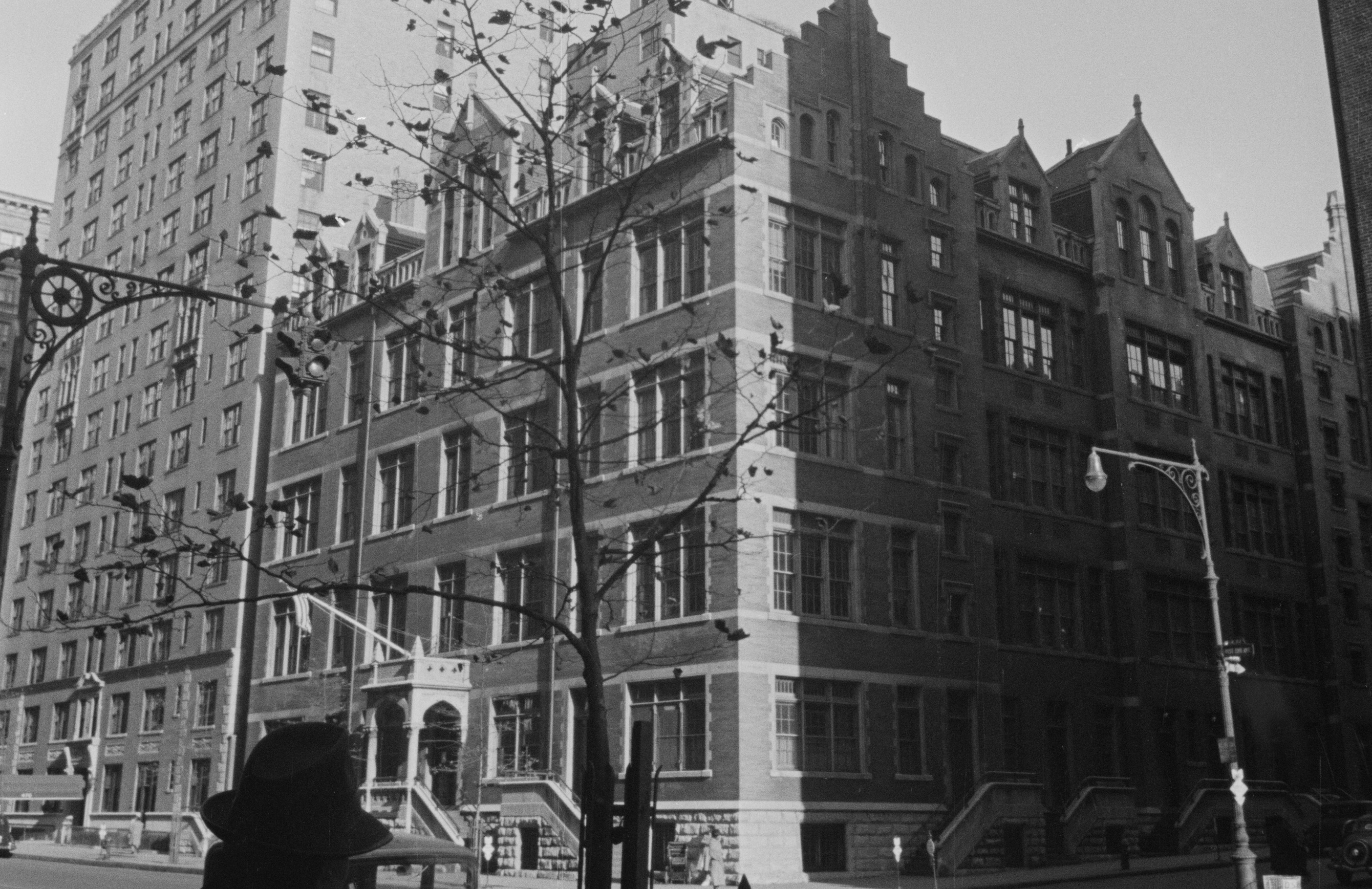
Mickey Mantle School: 460 West End Avenue
by Tom Miller
When Charles B. J. Snyder appointed Superintendent of School Buildings—a title equivalent to official school building architect—in 1891, he had a busy career ahead of him. Within three years, the Compulsory Education Law of 1894 would put into effect, mandating that all children were required to receiving schooling until at least the age of 14. Coupled with this, the city was expanding at such a rate that the Board of Education was playing an impossible game of catch-up in terms of providing schools.
Perhaps no area so greatly affected as the Upper West Side. The development of Central Park, the opening of public transportation and paved streets prompted a spurt of building. Side streets rapidly filled with middle and upper-middle class homes while the avenues saw the rise of fine mansions. The Annual Report of the Board of Education in 1896 reflected the problem. “The unprecedented growth of the city, together with the unexpected movements of population, rendered it almost impossible to keep pace with the demands in given localities or to anticipate the needs of certain sections of the city that speedily outgrew the accommodations that were provided.”
Grammar School No. 9 stood on 82nd Street between Broadway (known at the time as the Boulevard) and West and Avenue. Not only had the little school had become inadequate for the inrush of new residents, it was decrepit and vermin infested. One teacher told an investigator from the Committee on School Hygiene, “I have seen immense rats come boldly into the room and take the children’s luncheon from their desks during school hours.”
On June 20, 1890, just months before Snyder would receive his position, the Journal of the Proceedings of the New York Board of Estimate and Apportionment noted the sum of $27,000 for the purchase of land “for school purposes” for four new schools. One of the lots adjoined the site of the school to the east and extending to West End Avenue.
Not only had the little school had become inadequate for the inrush of new residents, it was decrepit and vermin infested.
Although the old school would not be fully demolished until 1894, Snyder went to work on a new, commodious and up-do-date structure. At the time, there was a resurgent interest in the Dutch roots of New York City and Flemish Revival architecture sprang up across the city. Nowhere did the style catch on as it did in the Upper West Side. By the turn of the century churches and row houses, sporting stepped gables and Dutch motifs would dot the area. Snyder turned to this fashionable style for the new school.
Plans were well under way in 1892 then The New York Times noted that in November contractors would be able to submit their proposals. The new school, it said, “will accommodate 1,848 pupils.”
C. B. J. Snyder produced highly attractive school buildings; but his attention equally focused on modern hygiene, safety issues like fire protection, and ample ventilation and light. A mechanical and architectural engineer, he was responsible for the “H-Plan” of school construction that increased the number of windows and fresh air.
The architect provided extra-large windows to allow daylight into the classrooms, but also provided both electric and gas lighting. To address the threat of fire he employed steel beams and hollow terra cotta block-and-cement floors, iron-and-slate enclosed staircases and hollow-brick partitions. To facilitate cleaning, interior walls lined with glazed brick and tile.
As the building rose The New York Tribune praised the design. On February 25, 1894 the newspaper said “Many people whose children attend Grammar-school No. 9…have been complaining in the last three or four years about the serious sanitary condition of the school building. These complaints were eminently just and well-founded.”
But there was hope on the horizon. “People in this part of the city will be glad to learn that one of the most perfect school buildings, with all modern improvements, will soon be erected on the site of the old building.”
The Tribune noted that construction expected to be complete by fall of 1895. “The building will be built of limestone and Tiffany brick, and it will be made absolutely fireproof throughout,” said the article, adding that the cost would amount to $173,000.
Snyder’s completed structure was handsome and imposing. Sitting on a rough-cut stone foundation above the sidewalk, the limestone-trimmed brick building rose to dramatic stepped gables and high chimneys. The main entrance on 82nd Street sheltered by a decorative stone Tudor-style porch.
The New York Times praised the finished school. “It is a model structure, well-appointed throughout, and is an ornament to the neighborhood, which in recent years has become one of the most fashionable sections of the city. The building is well warmed and is fitted with an automatic ventilating apparatus by means of which the whole structure is ventilated without opening a window.”
The newspaper commended the range of facilities. “On the top floor are large gymnasiums, a commodious and well-equipped kitchen, where instruction is given in cooking, and rooms to accommodate a large school library. There are also rooms for clay modeling etc.” In addition to arithmetic, reading and the other expected areas of education, The Times noted that children were instructed in sewing, cooking and music.
“The building will be built of limestone and Tiffany brick, and it will be made absolutely fireproof throughout,” said the article, adding that the cost would amount to $173,000.
When New York City public schools were, consolidated Grammar School No. 9 became Public School 9. Among the straight lines of silent pupils marching to class (absolute quiet was demanded in the hallways) in the 1930s was the future pop artist Roy Lichtenstein.
The school served hundreds of children in the neighborhood each school year for a century, teaching them penmanship, grammar, citizenship and civics. Here young minds learned to diagram a sentence, memorize Longfellow, and to appreciate music. Student decades later would remember that cooking class meant making rudimentary food like toast or Rice-Krispies treats and sewing classes produced potholders and aprons.
As the demographics of the Upper West Side changed, the student body noticeably infused with Puerto Rican children at mid-century. And while the school building remained unchanging, its name went through several transformations. In 1916 it was designated the John Jasper School (as well as Public School 9) after the recently deceased former principal. In 1965 it was renumbered Public School 148 and called the Peter Cooper School. Before long, it would be the Livingston School and in 2002 re-named the Mickey Mantle School in honor of the great Yankee baseball player.
Unlike most of the aging school structures, P.S. 9 survived totally intact into the 21st century. Today the Mickey Mantle School (Public School 811M) serves severely disabled students. Individualized attention given to children with multiple disorders, autism, severe language or communication problems, or deep emotional or behavioral needs.
Charles Snyder’s impressive Flemish Revival school listed on the National Register of Historic Places in 1987 and designated a New York City landmark in 2009.
Tom Miller is a social historian and blogger at https://daytoninmanhattan.blogspot.com/


